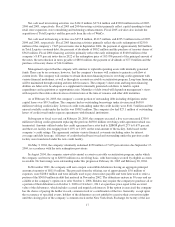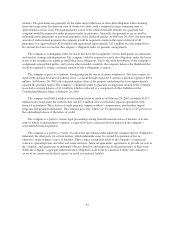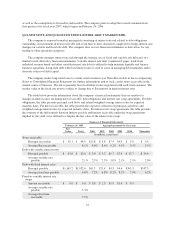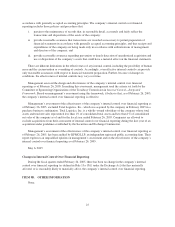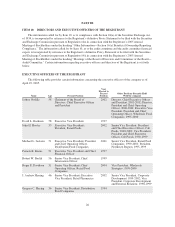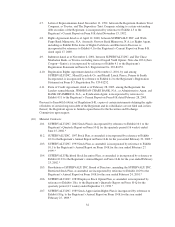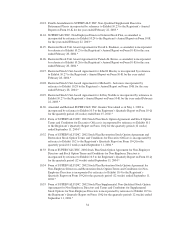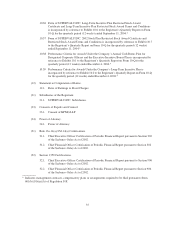Albertsons 2005 Annual Report Download - page 31
Download and view the complete annual report
Please find page 31 of the 2005 Albertsons annual report below. You can navigate through the pages in the report by either clicking on the pages listed below, or by using the keyword search tool below to find specific information within the annual report.accordance with generally accepted accounting principles. The company’s internal control over financial
reporting includes those policies and procedures that:
i. pertain to the maintenance of records that, in reasonable detail, accurately and fairly reflect the
transactions and dispositions of the assets of the company;
ii. provide reasonable assurance that transactions are recorded as necessary to permit preparation of
financial statements in accordance with generally accepted accounting principles, and that receipts and
expenditures of the company are being made only in accordance with authorizations of management
and directors of the company; and
iii. provide reasonable assurance regarding prevention or timely detection of unauthorized acquisition and
use or disposition of the company’s assets that could have a material effect on the financial statements.
There are inherent limitations in the effectiveness of any internal control, including the possibility of human
error and the circumvention or overriding of controls. Accordingly, even effective internal controls can provide
only reasonable assurances with respect to financial statement preparation. Further, because of changes in
conditions, the effectiveness of internal controls may vary over time.
Management assessed the design and effectiveness of the company’s internal control over financial
reporting as of February 26, 2005. In making this assessment, management used the criteria set forth by the
Committee of Sponsoring Organizations of the Treadway Commission in Internal Control—Integrated
Framework. Based on management’s assessment using this framework, it believes that, as of February 26, 2005,
the company’s internal control over financial reporting is effective.
Management’s assessment of the effectiveness of the company’s internal control over financial reporting as
of February 26, 2005, excluded Total Logistics, Inc., which was acquired by the company in February 2005 in a
purchase business combination. Total Logistics, Inc. is a wholly-owned subsidiary of the company whose total
assets and total net sales represented less than 1% of consolidated total assets and less than 1% of consolidated
net sales of the company as of and for the fiscal year ended February 26, 2005. Companies are allowed to
exclude acquisitions from their assessment of internal control over financial reporting during the first year of an
acquisition under guidelines established by the Securities and Exchange Commission.
Management’s assessment of the effectiveness of the company’s internal control over financial reporting as
of February 26, 2005, has been audited by KPMG LLP, an independent registered public accounting firm. Their
report expresses an unqualified opinion on management’s assessment and on the effectiveness of the company’s
internal control over financial reporting as of February 26, 2005.
May 6, 2005
Changes in Internal Control Over Financial Reporting
During the fiscal quarter ended February 26, 2005, there has been no change in the company’s internal
control over financial reporting (as defined in Rule 13a-15(f) under the Exchange Act) that has materially
affected, or is reasonably likely to materially affect, the company’s internal control over financial reporting.
ITEM 9B. OTHER INFORMATION
None.
25




